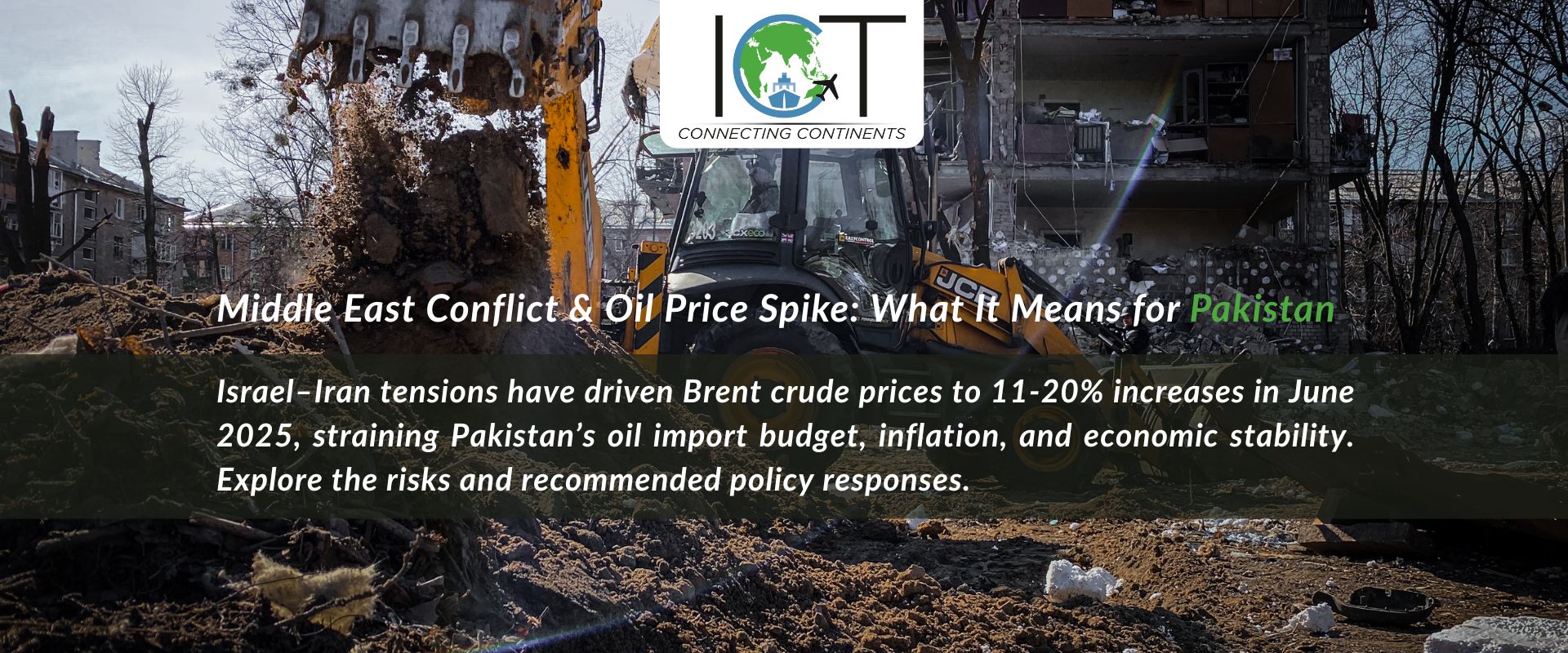
Israel–Iran tensions have driven Brent crude prices to 11‑20% increases in June 2025, straining Pakistan’s oil import budget, inflation, and economic stability. Explore the risks and recommended policy responses.
1. Oil Prices Surge Amid Middle East Tensions
Brent crude climbed roughly 20% in June, reaching highs near $77–80/barrel—the strongest monthly jump since 2020.
A U.S. strike on Iran’s nuclear sites pushed prices even higher to a 5‑month peak of $81.40, before settling around $77.
2. Geostrategic Risks to Supply Chains
Investors fear closure of the Strait of Hormuz, through which about 20% of global oil transits. A shutdown could catapult Brent to $130–150/bbl.
Analysts warn around a 1% hit to global GDP and added inflation if prices stay above $100 .
3. Pakistan’s Immediate Exposure
As a net oil importer, Pakistan faces rising import bills and inflationary pressure. Even a temporary price spike strains public finances and may trigger fuel price hikes .
The State Bank of Pakistan (SBP) held its policy rate at 11%, citing inflation risks from Middle East volatility.
4. Broader Market Repercussions
Stocks in Asia dipped, while energy and defense sectors benefited.
Global diesel prices—key for Pakistan’s trucking & agriculture—jumped ~15% in Europe, indicating ripple effects for domestic logistics.
5. Policy and Business Implications
Economic Pressure: Higher fuel costs exacerbate inflation, reduce disposable incomes, and pressure the IMF’s $7B program.
Strategic Responses: Pakistan must bolster fuel storage, revise subsidy policies, and liaise with OPEC/import partners for volume deals.
Long-Term Strategy: Accelerate renewable energy adoption, invest in dual-fuel transport infrastructure, and encourage energy efficiencies across industries.
🔚 Conclusion
The Middle East tensions and associated oil price surge pose a complex challenge for Pakistan. Beyond import costs and inflation, supply-chain disruptions are possible if the Strait of Hormuz is affected. Pakistan must take swift policy action—and boost resilience—to withstand these external shocks in 2025.

Add a Comment